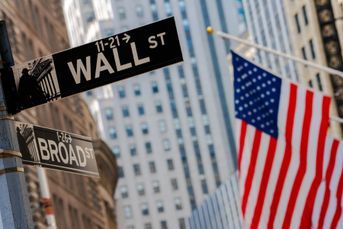Diversity trend plays out across Wall Street

Bank of America Corp. reports high percentage of female and non-white interns, with Goldman Sachs Group Inc. and Wells Fargo & Co. reporting similar numbers.
Wall Street is looking a lot more diverse — at least for the summer.
This year’s crop of interns is Bank of America Corp.’s “most diverse group ever,” the lender told investors on its second-quarter earnings call. Women comprise 45% of the current class — up from 42% in 2017 — while non-white interns make up 55%. Goldman Sachs Group Inc. and Wells Fargo & Co. report similar numbers.
“What we’ve seen is a lot of our efforts kind of come into fruition,” Elizabeth Schoentube, Bank of America’s head of campus recruiting and program management, said in an interview. “We’re really focused on not just the internship, not just getting them to be analysts, but what’s the career path and how do we get this pipeline to be our future leadership bench?”
(More: Looking for a competitive edge? Embrace diversity)
Women are already the majority of the Charlotte, North Carolina-based lender’s U.S. employees, making up 54% of its workforce in 2017. Employees of color comprised 45 %, according to company filings. As with other big banks, gender and racial diversity decreases at the highest levels, with women in less than a third of executive and senior-level roles last year and non-whites in less than a fifth.
The same trend plays out across Wall Street. Between 2012 and 2016, the percentage of black senior executives and managers declined at JPMorgan Chase & Co., Citigroup Inc. and Goldman Sachs Group Inc.
Big banks are relying less on the “friends and family and VIP network” to find interns, and have also moved to the model where most full-time hires come from the summer programs, said Andrea O’Neal of Management Leadership for Tomorrow, an organization that works with companies to increase diversity. Bank of America, for example, hired more than 70% of its 2017 intern class as full-time employees.
“Students that are being locked out of the internship experience are effectively locked out of the industry,” Ms. O’Neal said. “That pipeline and how it’s constricted, or not, is setting the longer-term diversity and inclusion strategy for the firm. You have to get people in the door first.”
(More: Why we must create a more diverse and sustainable financial planning profession)
At Goldman Sachs, nearly half of its summer class were women and a majority were ethnically diverse. “The firm’s intern program serves as our primary source of talent for entry-level hiring, and we are focused on building a class that is as diverse as and represents the communities in which we live and work,” spokeswoman Leslie Shribman said in a statement.
Women comprised 38% of Goldman’s U.S. employees in 2017, according to company filings. The bank’s top executives, including incoming Chief Executive Officer David Solomon, have pledged to increase that number to 50% in the future. By 2021, leaders aim for an even gender split in its hiring of recent college graduates.
At Wells Fargo, women are 42% of this year’s interns, and about half of the class is ethnically diverse, said Shawnda Jefferson, head of the early talent team. The San Francisco-based bank has about 900 interns spread across 15 programs, with Wells Fargo Securities making up one of the largest classes, she said.
Morgan Stanley has also seen increasing diversity among its intern classes over the past five years, according to a spokeswoman for the New York-based firm. Among the bank’s U.S. summer analyst and associate classes, 56% of participants were ethnically diverse. Globally, women made up 43% of the summer analyst and associate classes.
Putting together a diverse group of interns is one thing, but the tricky part is what comes next: retention. Ms. O’Neal, who started her career in the investment-banking department at Merrill Lynch, said she’s encouraged by the numbers.
(More: InvestmentNews launches workplace diversity and inclusion initiative)
“I wouldn’t think that a decade ago, when I was on Wall Street, that diversity might be mentioned on an earnings call,” she said. “So the idea that this is changing the zeitgeist and the conversation around inter-populations is important.”
Learn more about reprints and licensing for this article.








